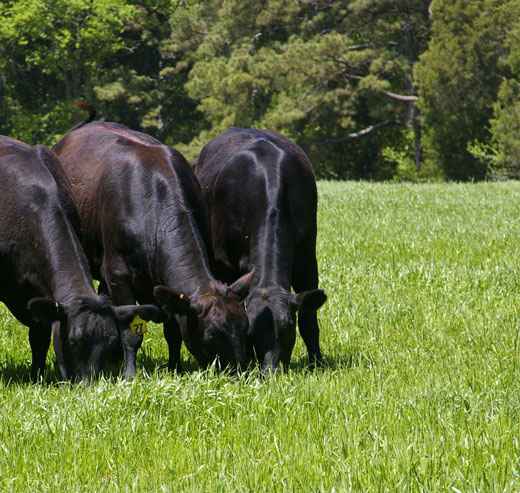
Things are heating up across the Cornhusker state, and many landowners are starting to turn their attention to the conditions of their pastureland as well as that of their cropland.
According to the latest NASS data, for the week ending July 10th, across Nebraska pasture and range conditions rated 2 percent very poor, 2 percent poor, 19 percent fair, 64 percent good, and 13 percent excellent—overall very favorable numbers. In fact, pasture conditions are now rated well above both last year and the five year average. Topsoil moisture supplies also rate favorable for this time of year.
As land values in all categories are in a downward trend, pasture- and rangeland are unique: Major cow-calf producing regions in Nebraska have reported small increases in value of around 10 percent for tillable and non-tillable grazing land, and hayland.
This fact, combined with the ongoing trend of higher cow-calf rental rates—record-setting in 2015—make closely monitoring the health of pasture-land a good idea for landowners. According to the 2015 UNL Nebraska Farm Real Estate Market Survey, per-acre rental rates reported an average increase of about 15 percent, with cow-calf rental rates averaging about $50 per month, or $250 for the 5 month season.
Keeping a close eye on rangeland conditions is important, according to UNL Extension Educator Bethany Johnston. Whether it’s to document pasture health for cattle grazing, wildlife habitat, or for NRCS programs, knowing the conditions of the land is advantageous to landowners in their decision making.
According to UNL Extension Educators, monitoring is key to rangeland and pasture management, and having a plan in place to measure changes in the land help landowners reach their overarching goals. Keeping records of precipitation, vegetation, and grazing is all part of that process.
For landowners, checking the conditions of their pasture may now be easier with the introduction of a new app, available on both Android and iOS devices, for use on tablets and mobile phones. Called “GrassSnap,” the app provides the following services:
- takes ranchers through the monitoring steps;
- stamps the photographs with the pasture name, GPS location, date, and direction looking;
- records comments about each pasture;
- stores the photographs and data in pasture folders; and
- can quickly download the information to a computer.
Extension Educator and app developer Cindy Tusler says the app helps landowners collect and upload data in an organized manner, using GPS for precise location markers.
“This is a decision support tool. It will give you easily repeatable information that helps you make decisions. It doesn’t make the decision,” Tusler said.
Johnston adds, “Each person’s management goals are different, so monitoring and assessment will flow out of those goals. The app makes it easier to remember and compare conditions from one year to the next at exactly the same site.”
How do you feel about the conditions of your pastureland? Do you have a monitoring plan in place? If you have any concerns regarding pastureland management, don’t hesitate to contact a UFARM representative. UFARM offers a full range of Nebraska land management services, including real estate sales, rural property appraisals, consultations and crop insurance. UFARM has operated in Nebraska since the early 1930’s. Contact us today!
Sources consulted: Johnston, Bethany. “Monitoring Pasture Condition? UNL Has an App for That.” UNL Beef. University of Nebraska-Lincoln. Jun. 2014. Web. 13 Jul. 2016. “Nebraska Pasture Conditions Exceed 2015 Levels.” Nebraska Ag Connection. USAgNet. 03 May 2016. Web. 13 Jul. 2016.

